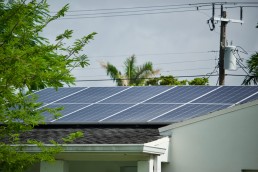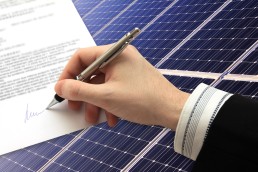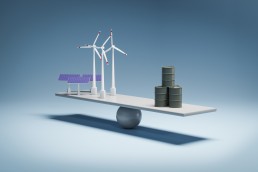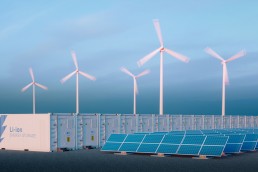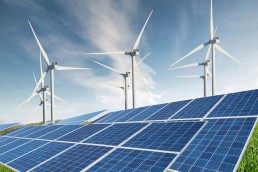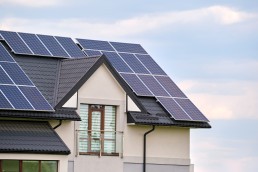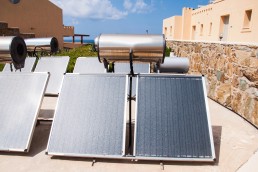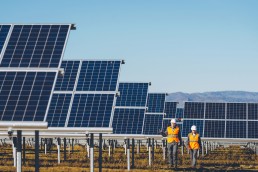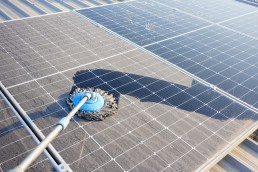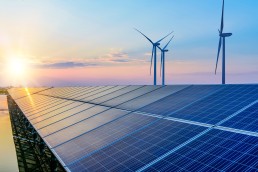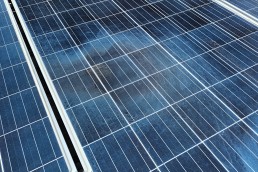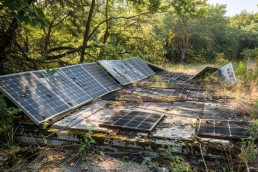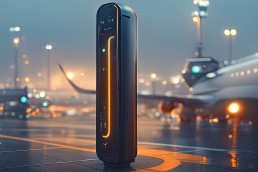It seems that monitoring of solar panels will get even smarter over time. Forschungszentrum Jülich GmbH has developed a self-referencing algorithm that can predict and identify string yield loss and underperformance without additional weather data.
The researchers evaluated the yield data of 9MWp PV station by applying the algorithm to determine underperformance. The facility has three-phase inverters deployed across 1719 strings. Such inverters have three strings on one mounting rack located in three rows.
The algorithm correlates with irradiance-dependent performance ratio and doesn’t need to consider the weather data. Such performance ratio that captures regular degradation is influenced by grid despatch, inverter limitations and environmental influences. However, such a ratio is much less effective than self-referencing algorithms in the long term perspective. The algorithm takes into account plant layout and extraordinary aging of components and can study all kinds of units of a solar power plant.
The algorithm can also predict and identify yield loss in underperforming strings. Also, it can identify and quantify such local differences as topography changes, layout, soiling, shading, row position and others by analyzing underperforming strings. However, the further advantages of this technology is still to be determined as the researchers are going to apply it “for degradation studies of time-series and root-cause analysis with machine learning and combination with different data sources, for example, imaging data” as per research paper.
Self-referential algorithm uses PV system’s string with maximum output as a reference for measuring the performance. Researchers benchmark the self-referential ratio against the established performance ratio that requires solar irradiance for calculation.
If this invention will be widely applied in the future, it can significantly improve the precision of solar panel efficiency calculations and thus will allow us to eliminate the cause of underperformance quicker.
You might also be interested in:
October 10, 2024
Net energy metering: how does it work and what are the benefits?
Learn about net metering, how it works and its benefits for renewable energy users and the grid.
October 9, 2024
Solar lease vs. buy: which is better?
Explore the benefits and drawbacks of leasing or owning solar panels to determine the best option for your renewable energy needs.
October 8, 2024
Solar energy vs. fossil fuels: what’s the difference?
Want to understand the differences between solar energy and fossil fuels? Explore the pros and cons, including their environmental impacts and financial considerations.
October 7, 2024
Is solar power truly renewable or nonrenewable?
Discover whether solar energy is considered renewable or nonrenewable and explore the benefits of solar power for a sustainable future.
October 6, 2024
Understanding on-grid solar systems. Powering homes and businesses
Find out how grid-tied solar systems work, their advantages and why they're popular for homeowners and businesses looking to harness solar energy efficiently.
October 4, 2024
Solar energy vs. wind energy. Pros and cons
Discover whether solar energy is considered renewable or nonrenewable and explore the benefits of solar power for a sustainable future.
October 3, 2024
Achieving household energy independence
Discover how energy independence through solar power can benefit your household, reduce costs, and contribute to a sustainable future.
October 2, 2024
Solar powered water heaters. A comprehensive guide to their value and efficiency
Many people in rural areas have difficulty accessing financial services, a problem exacerbated by energy insecurity. Solar power can help protect rural communities from energy…
October 1, 2024
Separating solar energy facts from fiction
Explore common solar energy myths and facts. Learn the truth about the efficiency, costs, and environmental impact of solar power in this guide.
September 30, 2024
Essential solar panel maintenance for peak performance
Learn key strategies for solar panel upkeep, from regular cleaning to performance monitoring. Maximize efficiency and extend system life.
September 27, 2024
Understanding smart power grid technology
Discover how smart grids modernize power systems, enhance efficiency and integrate renewable energy sources for a sustainable future.
September 26, 2024
Why do solar panels degrade?
How and why do solar panels degrade? Explore the factors contributing to their lifespan and what measures to take to extend it.
September 25, 2024
Solar panel and battery recycling
Learn effective techniques for recycling solar panels and batteries. Discover sustainable practices, legal requirements, and the environmental impact of proper disposal methods.
September 24, 2024
Will urban air transportation become widely available?
Learn about the latest innovations and practices that can further improve the sustainability of climate-resilient crops, benefiting both farmers and the environment.
September 23, 2024
Emerging innovations in unmanned systems
Unmanned systems can perform various tasks without the hands-on operation of a human, although they’re often operated remotely. These systems are increasingly being used in…

